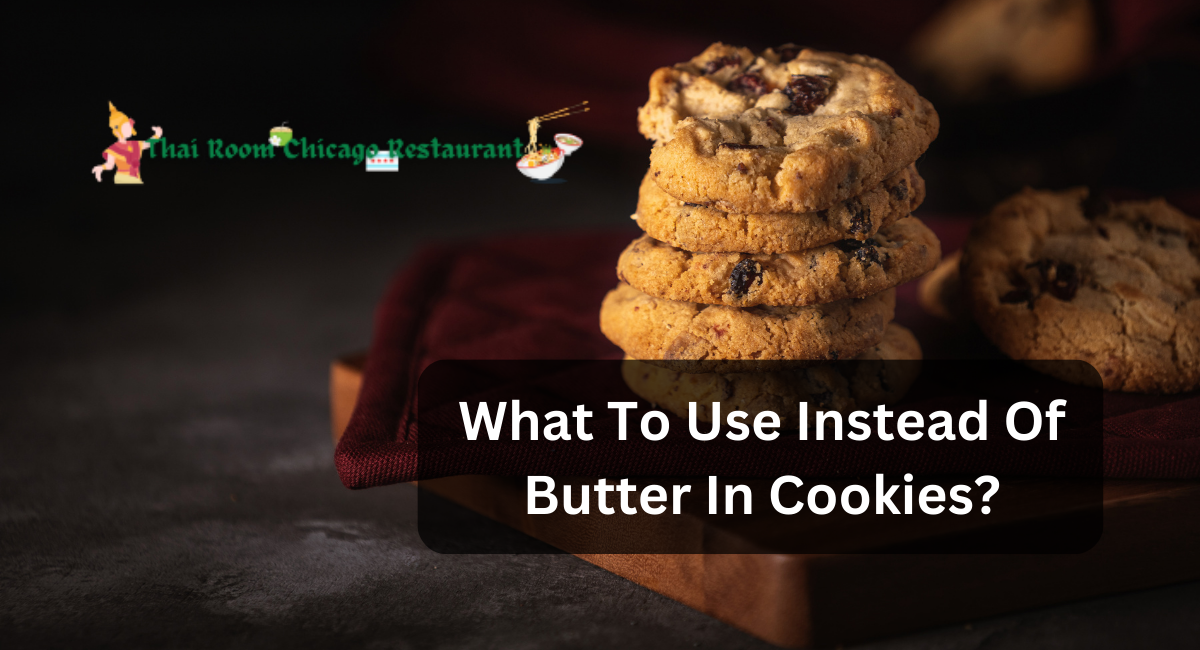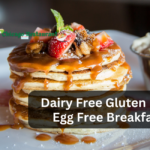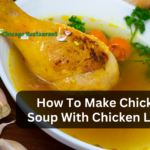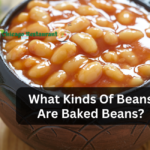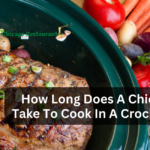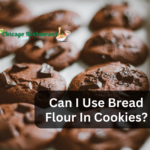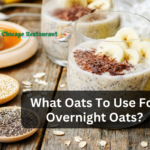Cookies are the ultimate comfort meal, and butter is a major ingredient in traditional cookie recipes.
But what if you want to create butterless cookies? There are wonderful alternatives available, whether you’re a vegan, lactose intolerant, or simply want to try with various flavors.
In this article, we’ll look at a range of butter substitutes in cookie recipes that not only keep your goodies delectable but also offer new flavors and textures.
What To Use Instead Of Butter In Cookies?
In baking and cooking, a variety of fats and other components can be substituted for butter. Understanding the importance of butter in the recipe you’re creating will help you decide the ideal component to substitute for butter.
Here are the following 15 components can be used as butter substitutes in various recipes and meals.
1. Margarine
Margarine is a fat comprised primarily of vegetable oil that has been prepared to taste like butter.
Because of its high water content, it can serve as a viable substitute for butter, particularly in baked items.
Margarine can be used in place of butter at a 1:1 ratio. The disadvantage of this component is that it is highly processed, therefore use it sparingly.
2. Shortening
Shortening is formed entirely of fat and is derived from hydrogenated vegetable oils. It has a neutral flavor that lets the other ingredients shine.
It can be used in a 1:1 substitution for butter, just like margarine. When shortening is chopped into solid form, it does not entirely combine with dry ingredients, resulting in marbling in dough and light, flaky pie crusts and biscuits.
It can also be used to make stable icings and to fry chicken and other proteins. For a more authentic taste, go for butter-flavored shortenings.
3. Olive and Vegetable Oils
In many recipes, olive and vegetable oils can be substituted for butter, resulting in moist, delicate baked items.
Olive oil imparts a mild, fruity flavor to cookies and cakes, but vegetable oil is a neutral oil that does not impart any flavor.
If your recipe calls for butter, reduce the amount of oil used to compensate for the extra liquid.
For every cup of butter, use 34 tablespoons of oil. If your recipe calls for melted butter, you can use oil 1:1.
Oil is not a viable butter alternative for things that require fat to remain solid, such as icing. Although it has a different flavor than butter, oil is an excellent butter alternative when cooking sautéd meals.
4. Coconut Oil
Coconut oil can be used in place of butter at a 1:1 ratio. The oil, which can be both solid and liquid, imparts a coconut flavor to foods, making it ideal for use in chocolate recipes or dishes with tropical flavor profiles.
Use it in a wide range of baked items to help achieve a crisp cookie texture. The use of refined coconut oils will help to reduce the coconut flavor.
5. Pumpkin Purée
In baking, pumpkin purée is a pleasant, nutrient-dense substitute for butter. Pumpkin not only adds sweetness to baked foods, but it also adds creaminess and seasonal warmth.
When substituting pumpkin purée for butter, use a 3:4 ratio; that is, use 34 cup purée for every cup of butter called for in the recipe.
6. Apple Sauce
Unsweetened applesauce works well as a butter alternative in brownies, cookies, cakes, and quick breads. Use 1 cup unsweetened applesauce for every cup of butter called for.
7. Greek Yogurt
Greek yogurt has a more firm consistency than melted butter. When used correctly, it adds a creamy, tangy flavor to baked foods that is evocative of buttermilk.
If you’re just using a cup of butter, substitute it with 1 cup of full-fat Greek yogurt. If your recipe calls for more than a cup of butter, you’ll need to increase the flour by 14 cup to compensate for the excess moisture from the yogurt.
8. Bananas
Bananas add a creamy, fruity flavor to dense baked products. Replace the butter in your cake, muffin, bread, and some cookies, including oatmeal, with an equivalent amount of ripe bananas.
9. Plant-Based Butter
Vegan butters, while slightly different in flavor from ordinary butter, can be used in a 1:1 ratio to produce baked items and frostings with the same texture as those made with dairy butter.
Plant-based butters are also great on bread and rolls, can be used in cooking, and can be drizzled over veggies.
10. Oil Of Avocado
Avocado oil has a high smoke point and a subtle fruity flavor, making it an excellent butter substitute for searing, sautéing, and even frying doughnuts.
It also works well as a drizzle instead of butter on meals like salmon. In your recipe, replace the butter with an equivalent amount of avocado oil.
A puréed avocado can also be used in a 1:1 substitution for butter for a pleasant alternative.
11. Mayonnaise
Mayonnaise’s eggs and oil can lend moisture and richness to both sweet and savory foods. Use it to make rich chocolate desserts or to give doughs a creamy feel.
To obtain a golden brown, crisp sandwich, apply mayo on the outside of the bread instead of butter the next time you make a grilled cheese.
12. Ghee
Ghee is butter that has been boiled and strained until the water and milk solids have been separated and removed, resulting in a concentrated or clarified butter with a rich, nutty flavor.
Ghee can be used in place of butter at a 1:1 ratio. Because the water has been removed, it has a greater smoking point than butter and is therefore ideal for frying and sautéing.
13. Butter Of Nut
Nut butters including almond, cashew, peanut, and tahini are rich, delicious, and nutrient-dense and make ideal butter alternatives in baking and cooking.
They will help preserve moisture in batter and dough and add a nutty flavor to baked goods and other foods.
They are great spread over breads and rolls, as well as a tasty element in meals. Tahini, not butter, gives these vegan and gluten-free Chocolate Tahini Cookies their craveable, nutty flavor.
14. Cheese
In many recipes, cream cheese, mascarpone, ricotta, and even cottage cheese can be used in place of butter.
Use a 1:1 ratio of high-quality whole milk cheeses for butter, and squeeze ricotta or cottage cheeses through cheesecloth to ensure they don’t add too much liquid to the dish.
15. Hummus
Hummus is a traditional Mediterranean dip made with chickpeas, tahini, olive oil, lemon, and spices.
It can be used in place of butter in soups and sauces, and it tastes great spread on pita bread or other breads and rolls.
Baking without butter brings up a whole new world of possibilities. You can make unusual and delectable sweets by using coconut oil for a tropical touch, avocado for creaminess, or nut butter for a nutty richness. Experiment with these options to find your preferred butter substitute and start baking delicious, butter-free cookies right away.
Thanks for reading. I hope you find it helpful.
